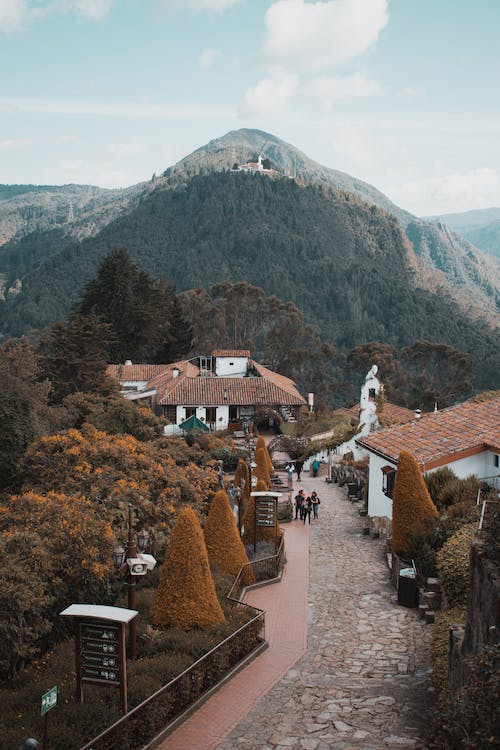Location: Nepal
Elevation: 6 145 meters
Lobuche is a Nepalese mountain located near the famous Khumbu Glacier, who both belong in the Himalayas range. It is an extension of the world’s tallest mountain, Mount Everest.
The mountain has two main peaks, the Lobuche East at 6119 meters and the Lobuche West at 6145 meters. A snow-covered, long deeply notched ridge connects them. However, a steep drop and a lengthy distance between the two makes traveling from one side to another impossible.
The east peak attracts more tourists as the route is relatively easy. Lobuche East is sometimes referred to as the “trekking peak,” while the Lobuche West is called the “expedition peak.” The first recorded ascent to the Lobuche East was on April 25, 1984, by Laurence Nielson and Sherpa Gyalzen.
About the Lobuche East Trek
The Lobuche East Peak Climb is an excellent introduction to Himalayan climbing. This multi-day hiking is considered beginner-friendly, given that prospect climbers need to be comfortable using ropes and crampons and do the abseil.
The normal climbing route is via the South Ridge. Its trailhead begins in Lukla and would require several days of trekking before reaching the Lobuche settlement and the Lobuche Base Camp.
The trail is a rocky moraine at a moderate incline angle. No mountaineering equipment will be needed until you reach the high camp. You will start using ropes for the main ascent to the Lobuche East summit from the high camp. The main ascent is more challenging as it will require extreme physical endurance.
A few distances from the summit, you will be required to use crampons and ice axes for the 45-degree climb. Climbers can stop by at the false summit situated southeast of the true peak. By definition, a false summit or a false peak is a point in the mountaineering trail that appears to be the mountain peak. However, once you reach the false peak, you will realize that there is a higher peak that is not visible from the ground. One cannot see the true peak until you reach the false one.
The actual peak is a couple of hours of ascent from the false summit along the northwest ridge. From there, trekkers are rewarded with a 360-degree view of the highest of the Himalayan peaks – Everest, Cho-Oyu, Lhotse, AmaDablam, Pumori, and Tibetan peaks. You could also experience cross-cultural immersion at the Sherpa community and camping along the remote valleys of Himalayas.
During the spring climbing season, trekkers might have to spend a night in the Everest Base camp.
When is the best time for the climb
The best time to climb is during Autumn and Spring. The dry weather in these seasons adds stability, making it safer for newbies. Aside from good weather, these months also provide opportunities for unique side trips. The Everest region will be covered with Rhododendron blossoms in Spring, while Nepal will have most of its festivals celebrated in Autumn.
Others may attempt to climb in Winter. It is also possible, but the snow would be deeper, and the glaciers would be more slippery. The precipitation and cold temperature would also increase, reducing the chance of a successful climb.
How long will the treks take
The trek would take 17-21 days, depending on the pace and the weather. Most itineraries would begin with a flight to Lukla. The ride would be exciting as tourists would have a glimpse of the Himalayan peaks and passes. You will be landing at Tenzing Hillary Airport in Lukla and would have to walk about four hours to reach Phakding (2600 meter elevation). The route to Phakding is a green landscape of pine forest.
The next day, you will be trekking for about 5-6 hours across the magnolia woodlands and suspension bridges towards Namche Bazaar (3440-meter elevation). Namche Bazaar is known as the Hub of Khumbu Region. You will acclimatize and spend the night here for the next few days. While there, get acquainted with the Sherpa culture by visiting their museums and interacting with the locals.
The next stop is the Tengboche (4110-meter elevation). The trail is similar to the route towards Namche Bazaar, except that you will have to ascend the gorge of the DudhKoshi River. You will spend the night here before moving on to Dingboche (4900-meter elevation). You will need to re-acclimatize in Dingboche before heading to Lobuche. Don’t miss out on the panoramic views of the Island peak and Cho-Oyu, the sixth highest mountain in the world.
The trail has become more complicated at Lobuche (5000-meter elevation). You will have to traverse a steep trail to arrive at ChukiLahara. At Lahara, you will walk over the moraines of Khumbu Glaciers to reach the Lobuche village, a remote settlement closest to the Lobuche peak.
From the village, you will have to trek four hours to the high camp (5300 meters). In the afternoon, you will have enough time to warm up your climbing skills for tomorrow’s big day. You have to wake up early as the summit day is a strenuous 10-hour trek and climb.
How much does the trek cost
The price depends on the inclusion of your climbing services. Generally, it should range from about 3500-6000 USD.

